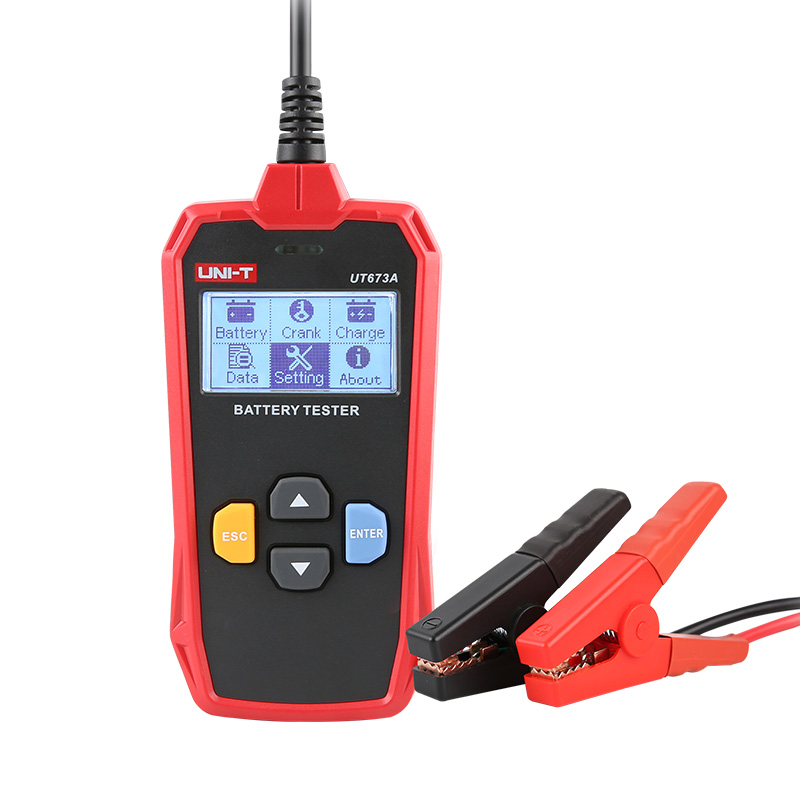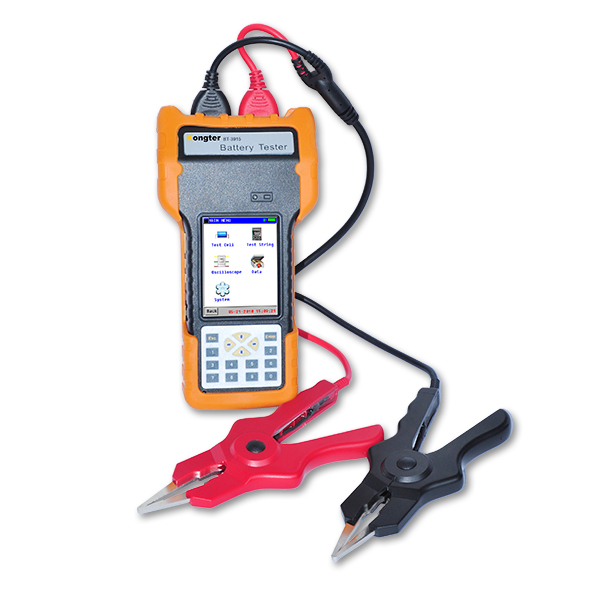Introduction
A battery tester is a device used to measure the voltage and overall health of a battery. It is commonly used in automotive, industrial, and household applications to determine if a battery is in good working condition or if it needs to be replaced. There are different types of battery testers available, ranging from simple handheld devices to more advanced digital testers.
When it comes to keeping your electronic devices up and running, the quality and life of the battery are crucial factors. From smartphones and laptops to cars and power tools, batteries play a crucial role in powering the technology that makes our modern lives possible. However, as with any component, batteries degrade over time and regular testing is essential to ensure optimal performance and prevent unexpected failures.
Part 1: Understanding Battery Testers
Battery testers typically work by connecting the positive and negative terminals of the battery to the tester’s leads or clamps. Once connected, the tester will display the voltage of the battery, allowing the user to determine if it is within the recommended range for proper functioning. In addition to voltage readings, some battery testers also provide information on the battery’s overall health and charge level, allowing for a more comprehensive assessment of its condition.
Level 1: What is a Battery Tester?
A battery tester is a device used to measure the voltage and, in some cases, the internal resistance of a battery. By doing so, it can determine the state of charge and health of the battery.
Level 2: Types of Battery Testers
There are various types of battery testers available, ranging from simple handheld devices to more advanced models with digital displays and built-in diagnostics. Some testers are designed specifically for certain battery types, such as lead-acid, lithium-ion, or alkaline batteries.
Part 2: Importance of Battery Testing
One of the key benefits of using a battery tester is that it helps to prevent unexpected battery failures. By regularly testing the voltage and health of batteries, users can identify batteries that are no longer performing optimally and replace them before they fail. This is particularly important in automotive applications, where a failed battery can leave a vehicle stranded and in need of a jump start or tow.
Level 1: Why Test Batteries?
Regular battery testing is essential for several reasons. Firstly, it allows you to assess the remaining capacity of a battery and determine whether it needs to be charged or replaced. Additionally, testing can help to identify weak or failing batteries before they cause unexpected downtime or damage to equipment.
Level 2: Benefits of Battery Testing
By identifying and replacing weak or failing batteries, you can improve the overall reliability and performance of your devices. This can lead to cost savings by reducing the need for premature replacements and minimizing the risk of unexpected failures.
Part 3: Using a Battery Tester
Level 1: How to Test a Battery
Testing a battery with a battery tester typically involves connecting the positive and negative leads of the tester to the corresponding terminals on the battery. The tester will then display the voltage and, if applicable, the internal resistance of the battery.
Level 2: Interpreting Test Results
The test results provided by a battery tester can indicate the state of charge and health of the battery. Understanding how to interpret these results is essential for making informed decisions about the maintenance and replacement of batteries.
Part 4: Battery Maintenance and Longevity
Level 1: Maximizing Battery Life
Regular testing, proper charging, and avoiding deep discharges can all help to maximize the lifespan of a battery. By identifying and addressing issues early on, you can extend the overall longevity of your batteries.
Level 2: The Role of Battery Testers in Maintenance
Battery testers play a crucial role in ongoing maintenance efforts by providing valuable insights into the condition of batteries. By incorporating regular testing into your maintenance routine, you can proactively address any issues and ensure optimal performance.
Part 5: Choosing the Right Battery Tester
Level 1: Considerations for Choosing a Battery Tester
When selecting a battery tester, it’s important to consider factors such as the types of batteries you’ll be testing, the level of accuracy and precision required, and any additional features or capabilities that may be beneficial for your specific needs.
Level 2: Recommended Battery Testers
There are numerous battery testers available on the market, ranging from budget-friendly options to high-end professional-grade devices. Researching and comparing different models is essential for finding a tester that aligns with your requirements.
Benefits of Battery Testers and Environmental Impact
Level 1: Benefits of Battery Testers
A battery tester helps to prolong the life of batteries by identifying when they need to be recharged or replaced. This can save you money by preventing the premature disposal of batteries that still have some life left in them. Additionally, battery testers can help prevent equipment malfunctions or failures caused by weak or dead batteries, which can be especially important in critical applications such as medical devices or emergency equipment.
Level 2: Environmental Impact
By enabling users to get the most use out of their batteries, battery testers can contribute to reducing the environmental impact of battery disposal. This is because properly functioning batteries are less likely to end up in landfills, where they can leak toxic chemicals into the soil and water. This can help to reduce pollution and the consumption of natural resources required to produce new batteries.
Testing Methods
Level 1: Types of Battery Testers
There are several types of battery testers available, including simple handheld devices, multi-purpose automotive testers, and advanced diagnostic testers for industrial applications. Handheld testers are typically compact and easy to use, making them ideal for consumers and small businesses. Automotive testers are more specialized and often include additional features for testing alternators, starters, and voltage levels. Industrial testers are capable of providing detailed analysis and diagnostics for larger battery systems, such as those used in data centers, telecommunications, and renewable energy installations.
Level 2: Testing Methods
Battery testers use different methods to evaluate battery performance, including conductance testing, impedance testing, load testing, and voltage testing. Conductance testing measures the ability of the battery to conduct electrical current, while impedance testing assesses the internal resistance of the battery. Load testing involves applying a simulated load to the battery to measure its performance under real-world conditions, and voltage testing simply measures the voltage output of the battery. Different testing methods may be more suitable for different types of batteries and applications.
Maintenance and Care and Integration with Other Equipment
Level 1: Maintenance and Care
Regularly testing your batteries can help you identify and address issues before they become more serious or costly. Additionally, proper care and maintenance of your battery tester itself can ensure accurate results and a longer lifespan for the device. This may include calibrating the tester as recommended by the manufacturer, cleaning the contacts and terminals, and storing the tester in a cool, dry place when not in use. Following the manufacturer’s guidelines for maintenance can help you get the most out of your battery tester.
Level 2: Integration with Other Equipment
Some battery testers are designed to integrate with other equipment, such as diagnostic tools, chargers, or battery management systems. This can streamline the testing process and provide more comprehensive data for analysis and decision-making. Integration may involve wireless connectivity, data sharing capabilities, or compatibility with specific software platforms. When selecting a battery tester, consider whether integration with other equipment is important for your applications and workflows.
Types of Battery Testers
- Conductance Testers: These testers measure the ability of a battery to produce current by sending a signal through the battery and measuring the response. They are commonly used for lead-acid batteries.
- Load Testers: These testers apply a load to the battery and measure its performance under load. They are particularly useful for identifying weak or failing batteries.
Features to Consider When Choosing a Battery Tester
- Compatibility: Consider the types of batteries the tester can accommodate, such as lead-acid, AGM, gel, or deep cycle batteries.
- Display: Look for a battery tester with a clear and easy-to-read display that provides accurate and detailed information about the battery’s health and performance.
Conclusion
Overall, a battery tester is an essential tool for anyone who relies on batteries for power. By using a battery tester regularly, users can ensure that their batteries are in good working condition, preventing unexpected failures and saving time and money in the long run. Whether used in automotive, industrial, or household settings, a battery tester is a valuable tool for maintaining the reliability and performance of battery-powered devices.
In conclusion, the use of a battery tester is a crucial aspect of maintaining the performance and longevity of batteries in a wide range of applications. By understanding the importance of regular testing, how to use a battery tester effectively, and the role it plays in maximizing battery life, you can ensure that your devices continue to operate reliably and efficiently. Remember to select a battery tester that aligns with your specific needs and to incorporate regular testing into your maintenance routine for optimal results.





